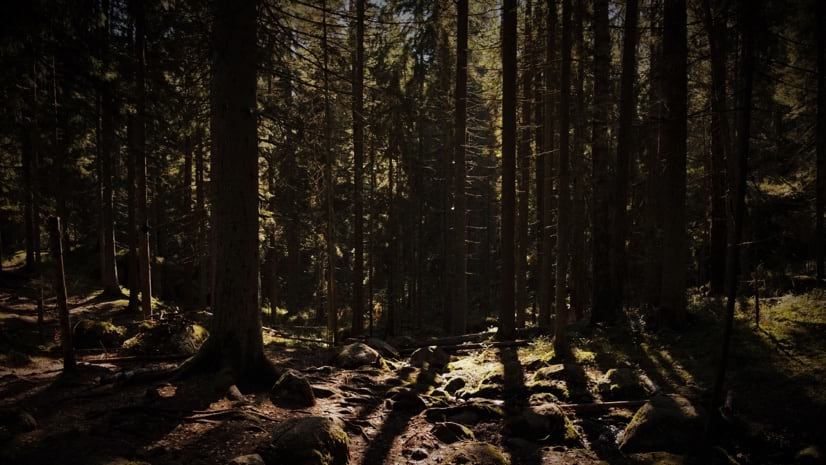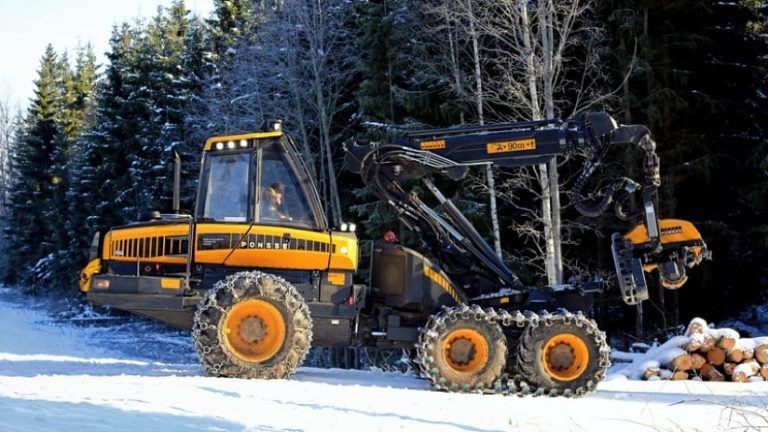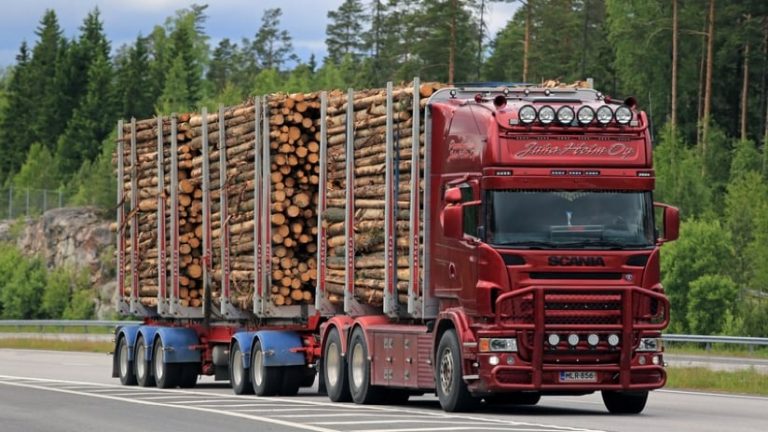

We want the data to be so accurate that users can see and sell without having to go to the forest.
December 16, 2019

Finland’s forests cover three-quarters of the country’s landscape, and monitoring the maintenance of this vast space falls on the Finnish Forest Centre. Recently, the center’s forestry experts developed an ambitious idea to use robots to autonomously perform the majority of forest maintenance tasks.
Before they can train the robots, Finnish Forest Centre staff must be sure their data is accurate and accessible. They use aerial and lidar imagery to create forest inventories, cataloging tree measurements and species details. Then they collect, map, and analyze all the data that robots will need in a geographic information system (GIS).
“There’s no reason why tree harvesting machines can’t be automated,” said Tapani Hämäläinen, development director of the Finnish Forest Centre. Hämäläinen and his team see robots providing several benefits. Automation could simplify forest management especially for private owners who hold more than 65 percent of Finland’s forests. It would also allow proactive management of forests, a move that would maximize the carbon sequestration of trees. And, robots could fill an employment gap due to a lack of interest in forestry jobs.
“Going to the forest for 12 hours a day to drive a harvesting machine is lonely work in a dark forest,” Hämäläinen said. “Some people like that, but there’s no queue of people who want to be trained for these jobs. It’s a real problem that can’t be solved without automation.”

Weather and a long history of sustainable forestry make Finland Europe’s most forested nation. Revenues from the forest industry contribute nearly 30 percent of Finnish export income, much of it from pulp and paper production. Finnish pulp and paper exports have risen steadily from half a billion euros in 2009 to 1.8 billion euros in 2017. This is attributed to greater demand for paper-based packaging due to growing online commerce and increased awareness of plastic pollution.
In 1994, Finland adopted new environmental regulations, balancing the need for a sustainable economic return with environmental preservation and biodiversity. Foresters abandoned practices such as draining bogs or applying herbicide to kill undergrowth and started planting four trees for every one cut down. This same legislation also encourages landowners to take an active role in managing their forestland.
“We want to activate forest owners,” Hämäläinen said. “They may have inherited a piece of forest and don’t know where or what they hold, so they don’t do anything.”

The Finnish Forestry Centre provides private forest owners with forest management plans and recommendations. Center staff help owners calculate the value of their forests to transact a sale or collect payments for conservation. The center also provides subsidies for planting seedlings or building infrastructure such as forest roads or drainage ditches. In a country as lush as Finland, this level of attention to forests is a must.
“Doing nothing leads to a forest so thick that it doesn’t grow or take in more carbon,” Hämäläinen said.
The Finnish Forest Centre has created a website Metsään.fi (meaning the forest) that delivers e-services and creates a marketplace for forest owners to connect with forestry professionals for services including logging work. The site provides open access to (and download of) the government’s forest inventory data with transparent measurements both the buyer and seller can use.
“We collect all the forest data nationwide,” said Juha Inkilä, a forestry expert at the Finnish Forest Centre. “We conduct a continuous inventory that cycles through the entire forest every six years.”

We want the data to be so accurate that users can see and sell without having to go to the forest.
Center staff update the portal with data obtained from laser scanning, aerial photography, sample plot measurements, and site visits. Between surveys, information such as work reports is maintained based on notifications received by the Forest Centre from forest owners and forestry organizations. Tree growth is factored into portal data with suggested actions updated annually.
Now, the Finnish Forest Centre serves as a central source for accurate, authoritative, real-time data used by forest owners and others in the industry.
“We want the data to be so accurate that users can see and sell without having to go to the forest,” Hämäläinen said. “In 85 percent of the cases, we have accurate data now, and we’re working to solve the final 15 percent.”

To fill the gap on accurate data and decrease the amount of fieldwork, the Finnish Forest Centre is using AI. One of its first use cases for AI is to gather information about young forests and seedling stands. GIS data, imagery sources, and climate and weather datasets are combined to produce accurate measurements of forest stands and to better predict forest inventory. Machine learning algorithms are being tested to extract the same measurements that have previously required in-person inspection crews.
For foresters and landowners, the work of AI will give them knowledge about the volumes and species of wood without driving to the land to do a costly, time-consuming inspection.
AI and big data will also be used to detect signs of spruce bark beetle attacks, detected on satellite photos of forests, and to optimize logistics and the supply chain.
In Finnish elections this summer, the Green Party became the country’s second-biggest political party, raising a new level of interest in the forests.
“Sustainability is a big thing globally and also in Finland,” Hämäläinen said. “Of course, the government wants to change legislation toward preserving more carbon, but they don’t yet have specific plans about how to do that and what would be the best way to do it.”
The issue holding back a change in forestry legislation is that science has yet to determine the mix of practices to maximize the carbon sequestration capacity of trees.
“The biggest questions right now are, How much carbon does the forest take? and Is it better to harvest selectively or clear-cut and then plant new trees?” Hämäläinen said. “At the moment, you get different answers but eventually our data will reveal the correct answer.”


